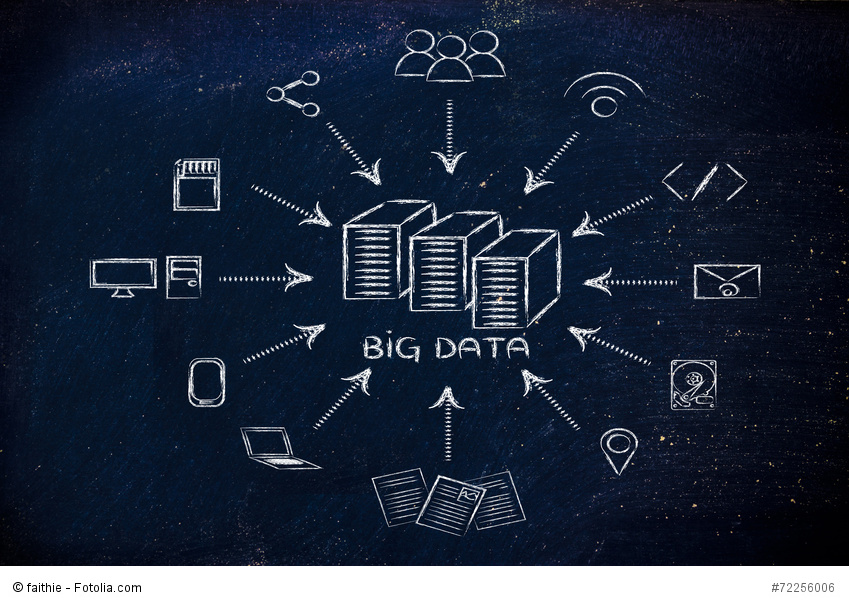Successful data migration in companies
With a migration of data (word origin: Latin migration means emigration or migrare means: to move, to move away) one moves data from one (old) system to another (new) system. The classic example is: How do I get my old mobile phone data onto my new one? It’s like moving from an old to a new platform without data loss.
We want to concentrate here on data migration, in which large amounts of data are moved from an old database to a new database. It should therefore be about larger migration projects of enterprises. Here it is enormously important that the data migration runs professionally and planned, since it usually concerns many, important data, which must be available again after the migration.
When is data migration necessary?
Companies must perform a data migration if, for example, a new ERP or CRM solution is to be introduced or if several companies are to be merged or if companies are to be taken over, i.e. in the case of a company takeover.
How to proceed with a migration project?
A data migration requires not only know-how but also resources and a technical infrastructure. Before starting the data migration, you should have a detailed process plan and proceed step-by-step and systematically. It is extremely important to take data errors into account as well as to have a structured schedule.
First of all, test runs should be started and the application processes put through their paces. During the preparations it is important to involve the respective departments if possible, so that the IT is optimally equipped for all problems that arise and can obtain detailed background information.
The most important steps in preparing for data migration:
- Creation of a reasonable migration concept (overview of the data/target system, definition of project phases)
- Preparation of the data and the source system/An important part of the preparation is a data analysis in which data corpses and redundancies are also detected. Once the quality and timeliness of the data have been determined, it must be determined how the data (and which data) are to be archived. It must first be clarified which processes the data access, which data is necessary and how to ensure that only the high-quality, important data is transferred to the target system.
- So-called “mapping” (adapting the data) should take place. This means that old information is adapted to the new data structures – many sources of error lurk here.
- Then test scenarios should be run through, i.e. tests should also be carried out in order to realistically assess the process times.
- Only then will the prepared data be imported into a new system (data merging) – Before importing, test the data on a test system – If data already exists in the new system, the consecutive ID numbers must be observed.
- Protection/backup in case the migration does not function properly/fails: Most importantly, protection against data loss through a consistent backup strategy, including a check of the backups and recovery functions should be done beforehand.
- After the successful migration, the data should be randomly checked and then the data quality should be sustainably assured.
Problems with data migration – Where are the sources of errors?
- Problems can arise if there are different data sources and data structures as well as different source and target structures. Or if the quality of the data is not high, if there are many obsolete master data records or if redundancies can be found in the master data.
- Problems can also arise if the data models of the old and the new application are very different / The source system and the target system handle the data differently.
- It also becomes difficult when a lot of legacy data is distributed across many applications.
- Note: If the migration is running while a new application is being implemented, resources may become scarce.
Advantages of data migration with n2pdf
Using the example of a data migration from IBM Notes, one can show how to successfully migrate and archive larger quantities of business documents and e-mails: When migrating and archiving business documents (e.g. from IBM Notes), it is a good idea to convert all documents to PDF/A first. This allows all e-mails and documents to be moved from an old system to a new one without data loss, while at the same time complying with legal requirements.
When migrating data with n2pdf, all documents are converted to PDF/A and can also be viewed with digital signatures. PDF files including the Notes navigation element can be created at the push of a button. Structures set up in IBM Notes can even be supplemented with new, meaningful structures (tables of contents). In addition, the attachments of emails or IBM Notes documents are also converted into PDF.
No matter from which old system a migration and archiving of all documents should take place, usually the system (e.g. IBM Notes) has been individually adapted and grown to an own database application, which was exactly tailored to the business processes. This also includes tables of contents, manuals, product catalogs, etc. With n2pdf, the existing structures can be transferred to PDF/A during conversion. Even complex IBM Notes documents or IBM Notes databases can be converted and the previously defined structures of the databases are retained. The advantage of n2pdf is clearly that the user can easily create PDF files that contain IBM Notes navigation elements.
Reading tip:

